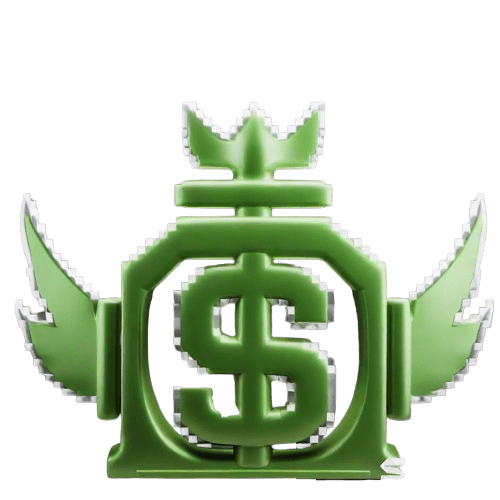DISCLOSURE: THIS POST MAY CONTAIN AFFILIATE LINKS, MEANING I GET A COMMISSION IF YOU DECIDE TO MAKE A PURCHASE THROUGH MY LINKS, AT NO COST TO YOU. PLEASE READ MY DISCLOSURE FOR MORE INFO.
Reading through different blogs, you will discover many different new blogging terms that might have left you feeling lost.
For example, I read an article not too long ago that mentioned the website’s Alexa rating and was clueless.
Why is it that all these websites are going on about their Alexa ratings?
So I did some digging!
It turns out that Alexa’s rating is a ranking that shows how popular a website is. Alexa uses web traffic data to make an ordered list of the most popular websites on the internet.
There are a ton of new terms bloggers will come across when they get into blogging, such as alt text and CMS. I figured it would be a good jumping-off point to help define a good list of blogging terms you need to be familiar with when you start your blogging journey.
Let us break some terms down!
90 beginner blogging terms
Table of Contents
A
A/B Testing involves dividing up the population that gets your message, using a different approach with each of them, and then comparing the results to see which approach is better.
Affiliate: An affiliate marketer is someone who makes a commission by promoting someone else’s (a company’s) products.
Alexa rating: Alexa measures the last few months of internet traffic. The lower your Alexa rating, the better.
Alt Text: A phrase or a word that can be added to let website viewers know the nature or contents of an image
Anchor Text: clickable text in a hyperlink
Auto-blogging: automatically pulls in content from other blogs and puts it on your site. This type of aggregation is usually done by using a plugin that pulls in an RSS feed from different blogs.
B
Backlink: Any link that points to one page from another page
Black Hat SEO: the use of traps to achieve short-term SEO benefits
Blog: A continuously updated website or web page, usually run by a single person or group of people, that is written in a conversational style.
Blogger: Someone who writes a blog.
Blogging is adding new material to a blog.
Blogosphere: The blogging universe
Blogroll: A group of links to other blogs that you enjoy reading.
Bounce Rate: This is how often someone looks at your site and leaves, or bounces, away from it. The percentage of people who left the page without checking any other pages A low bounce rate is good and means fewer people are leaving without checking out more posts or pages.
Brand: you, your services, your products, or your organization.
Branding: The steps marketers take to get you to think positively about their service, product, or company
C
Call to Action – (often abbreviated as CTA) is a line of text or image that drives visitors and leads customers to take action.
Click-Through Rate: Measurement of how often people click on a certain link
Content Syndication is the process of adding your blog, video content, or site to another site as a link, snippet, or thumbnail.
Content Upgrade An Incentive to Subscribe to Your Blog This content upgrade should be related in some way to your blog article.
Conversion Rate: The number of visitors to your website who take action beyond viewing.
Copyright: A person’s legal right to their intellectual or physical works
Creative Commons: This type of licensing is generally used on photo-sharing sites.
Curated Content: Specifically selected content that is focused on quality
D
Direct Traffic people who visit your URL directly
Domain Authority (MOZ Metric) Metric on a scale of 1 to 100, where 100 represents the best and 1 is the worst. The higher your score, the higher you rank in search engines.
E
Editorial Calendar: A calendar that is used to show when you are going to publish the content you make
Engagement: likes, retweets, and comments (methods of sharing).
Evergreen Content is content that is relevant all year.
F
Favicon: the little image that shows up on internet tabs
G
Graphic: a visual representation of your content
Gravatar is an image that follows you from site to site, showing up beside your name when you do things like comment on a blog post.
Guest Post: Publishing an article on someone else’s blog
H
H1, H2, and H3 are heading tags for different-sized headings. This should usually contain your keyword.
Host: A company that provides the space on their servers to store your blog.
HTML is a language that is used for creating effects on web pages.
Hyperlink: a link from an article that brings you to another location or file, commonly activated by clicking on a highlighted word or image on the screen.
I
Inbound Marketing – This happens when you write a blog article and then the customers come to you without you having to fight for their attention.
Internal Link: Connects one page of a website to a different page on that same website.
Influencer: Someone who has an impact in a specific niche.
Infographic: a visual image such as a diagram or chart that presents information or data.
K
Keyword: a word or phrase someone is searching for.
Keyword Research: Finding and searching for keywords that are highly used and relevant to improve your rankings
L
Lead Magnet are incentives you give people to subscribe to your blog.
Link: A link is a group of words or images that someone clicks on to go to a new page or a new section within that current page.
Linking: Linking to something helps you emphasize your point and is helpful for your readers.
Link Baiting – Link building technique. Content that is made to drive other content creators to link to it.
Longform content: 700 words in your article are considered “long-form”. Advantages with long-form content or a lower bounce rate on your articles. Long-form content also helps you establish yourself as an authority in your niche.
Long-Tail Keywords: Long-tail keywords are usually at least four words long. They are longer and more specific keyword phrases that people are more likely to type.
M
Media Kit: A blogger’s resume showing their statistics and things they have accomplished
Meta Description: The description that is seen by search engines on your blog or posts It is great for SEO.
Monetization is the way you make money through your blog using affiliate networks, AdSense, or your courses.
O
Off-Page SEO: Website awareness you generate for your page or post
On-Page SEO: The content of your post or page and how relevant it is to the search engines
Organic Traffic is traffic that you receive from search engines and does not include paid advertising.
P
Page Rank is the algorithm used by a Google search engine to measure the authority of a web page.
Page Views: The number of times a user visits a web page
Pain Point: Your readers’ problem A good blogger is someone who tries to solve the reader’s problems.
Permalink: the URL of the post you publish
Plugin Software – that can add extra functions to a WordPress blog
R
Referral Traffic is people who find your website by clicking on a link from a different website.
S
Self-hosted blog is one where the blogger owns the site and the domain name.
SEO (search engine optimization) optimizes your blog to rank better in search engine results.
SERP (search engine results page)
Short-tail keywords are keywords that are focused on SEO keywords with only a single word.
Sidebar an area on the side of your blog where you can add widgets
Sitemap: a list of the pages on a website that search engines use to crawl and rank your site.
Slug: short, abbreviated titles in their URLs
Social Proof is a psychological phenomenon where people assume other people’s actions reflect the right behavior for a situation. Everyone wants to follow the crowd if they think other people are in on the latest and best thing.
Sponsored Post: A post that a blogger is paid to write
Stop Words: Common words in a slug that can hurt your SEO
T
Tagline: a short phrase or sentence used to show what your site is about.
Theme: The overall style of your blog
Thin content: a page with no real value that has the goal of just getting more traffic. It has no deep insights into your niche and nothing that can be found on a similar site.
TLDR: Too long; I didn’t read it.
Traffic is the number of people who visit your website. Shows how popular a website is.
U
Unique Visitor: A visitor to the website that is only counted once, regardless of how many visits
User Intent is the targeted goal a person has in mind when they choose to search.
W
Webinar: a seminar that is conducted over the Internet.
White Hat SEO: Ethical techniques, optimization strategies, and tactics that are known to be ethical
Widgets are tools that can be added to the sidebar of your website.
I hope this helps you on your journey to becoming a blogger!

Personal finance geek and explorer of the web who loves to post in-depth blog posts about his findings.

